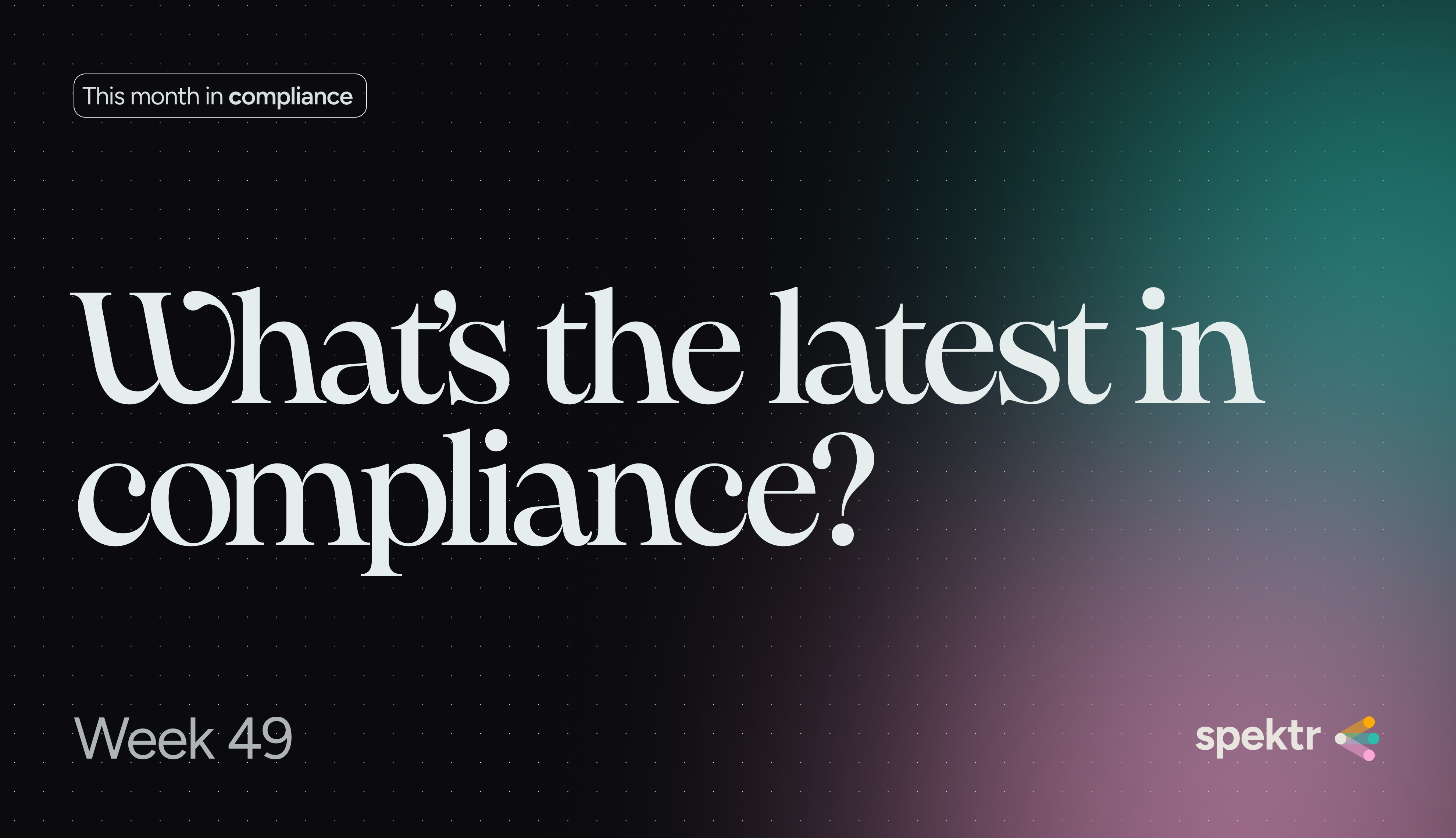spektr 2.0 is here
Try the platform

Share the article
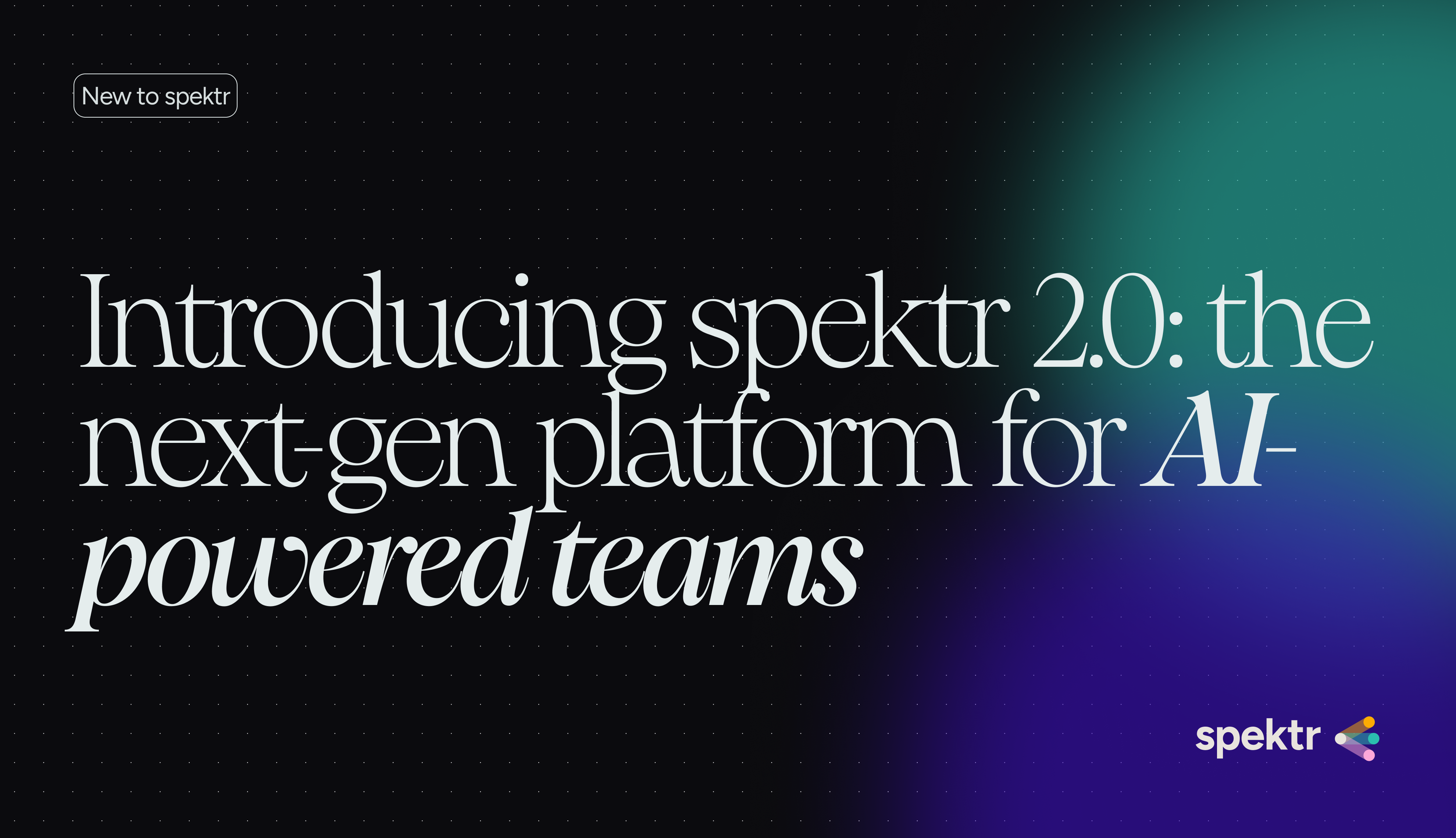
Twelve months ago, spektr was helping some of Europe’s most innovative fintechs solve a host of compliance processes. We gave compliance teams the tools they needed to automate decisions and handle KYC and KYB without the usual chaos of manual checks and disconnected systems. And it worked. Really well. Companies were replacing fragile internal tools, removing backlogs of cases, and passing regulatory audits with confidence. What we’d built gave compliance teams a real sense of control – something they hadn’t had in years.
But as we spent more time with our customers, a pattern started to emerge. People weren’t just asking for more features. They were asking us to help them rethink how they worked. They wanted to reuse their logic in new ways. They wanted faster iteration, more transparency, and the ability to extend beyond, into onboarding, continuous monitoring, merchant reviews, source-of-funds checks, and more.
In short: they wanted infrastructure, not just tooling.
More recently though, we’ve been seeing the increasing demand for AI in helping with tasks that humans simply can’t do as effectively. AI talk isn’t new, but applying it creatively (and ethically) to compliance is.
That’s why today, we’re launching spektr 2.0: a reimagined version of our platform built to power every part of the customer lifecycle. It’s faster, smarter, more modular, and designed from the ground up to give compliance teams the same level of leverage that engineers have come to expect from modern platforms.
spektr 2.0 has two main components. The first is our AI toolbox that includes a host of AI agents, each of which is tailored specifically to perform an action better than anything we’ve ever seen before.
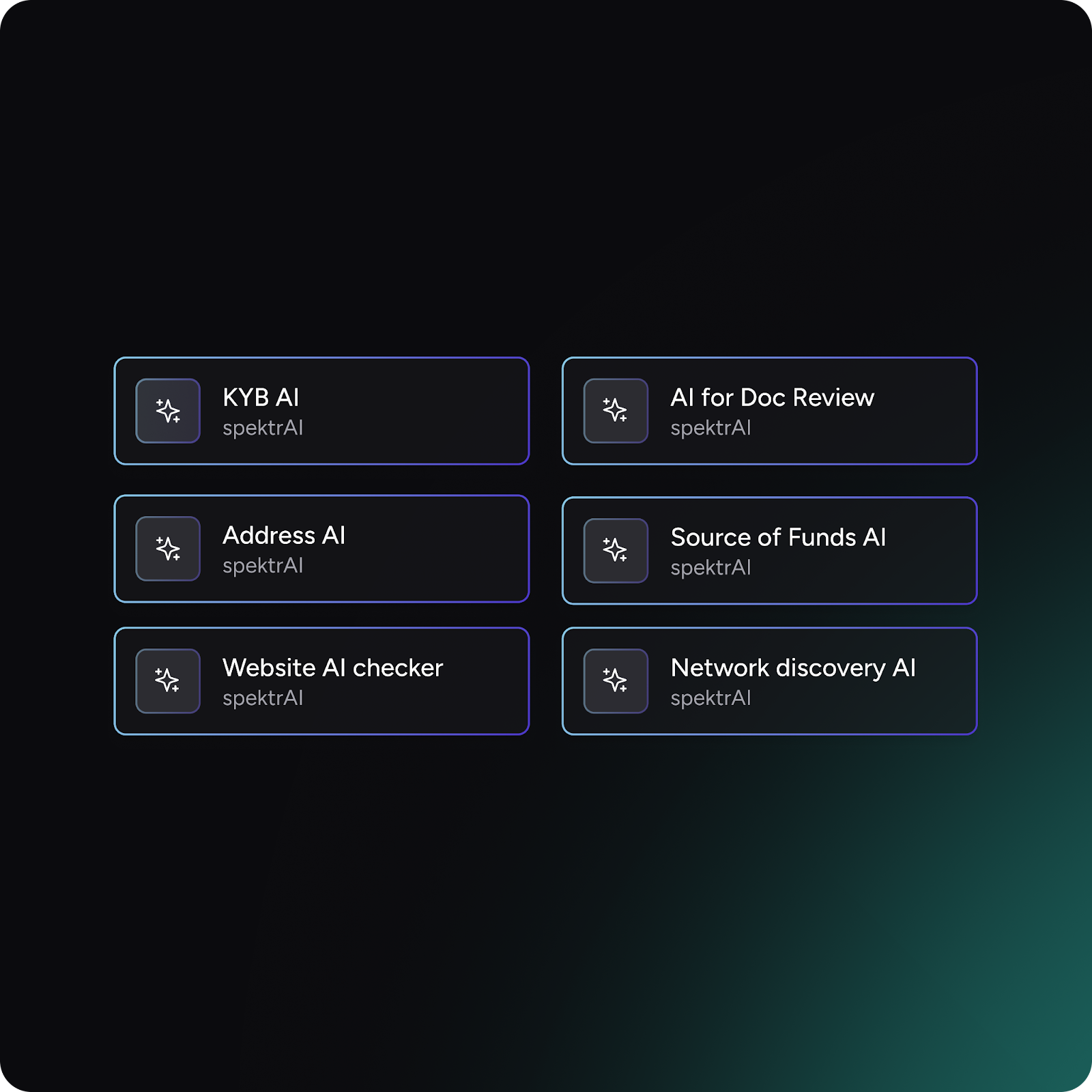
The second component consists of our spektr modules – a modular approach to setting up compliance workflows, without having to rip and replace your own infrastructure. spektr acts as the core system that connects everything together and we make sure that data is sent to the right systems at the time and place.
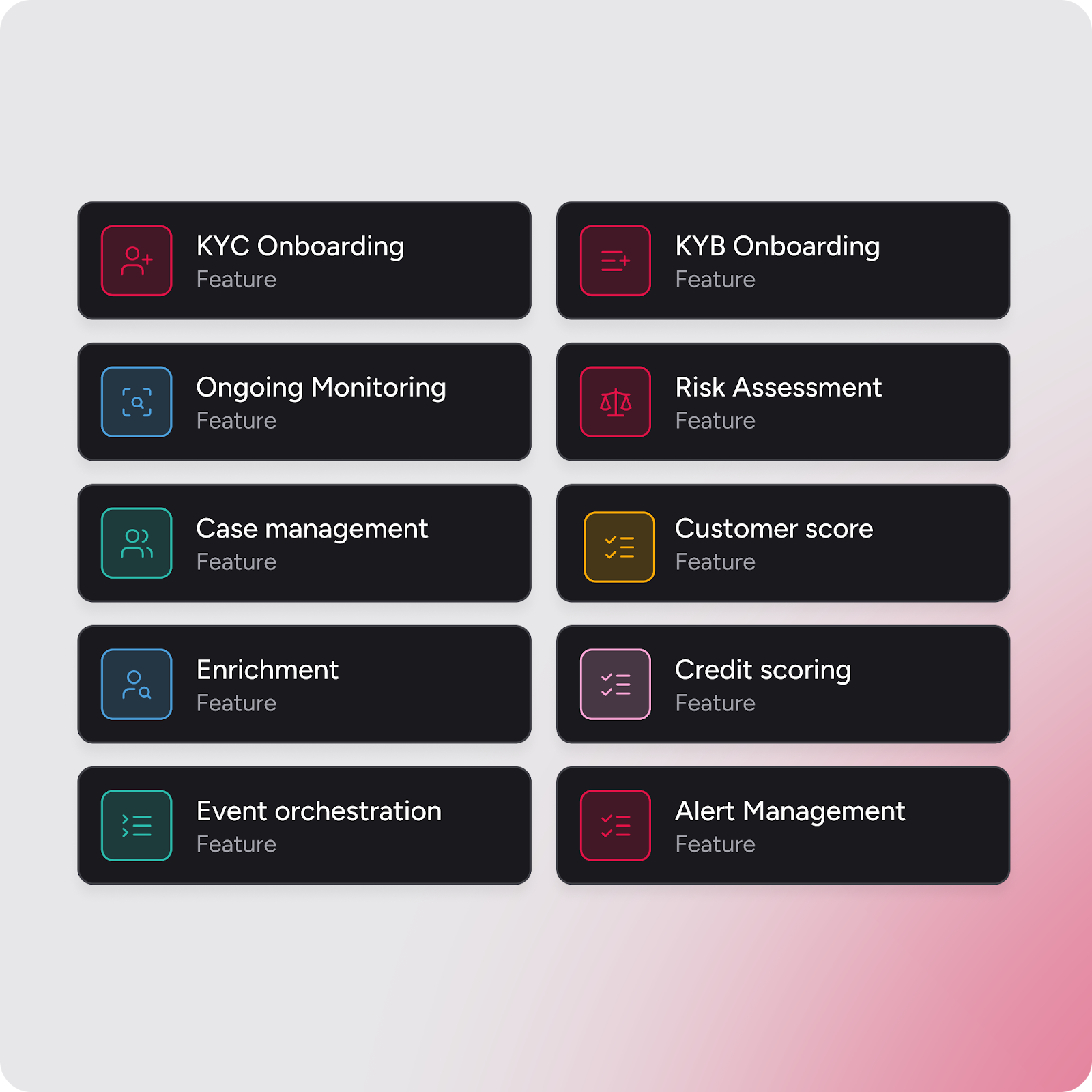
But before getting into the nitty gritty of what this means, let’s rewind and take a look at how we got here to begin with.
spektr v1: where we started
When we first built spektr, our goal was to bring modern software principles – clarity, automation, composability, into a part of the stack that had been historically neglected: compliance. The early version of spektr gave teams a way to define compliance processes in structured logic, configure dynamic forms, ingest third-party data, and automate decision-making with the confidence that nothing would fall through the cracks. It was all no-code and audit-ready from day one.
For a lot of teams, that was game-changing. Instead of waiting months for an internal system to be built (or rebuilt), they could launch a compliant setup in weeks. And when regulators came knocking, they had clear records of what was done and why. We became the default operating layer for dozens of customers, from fast-moving startups to regulated institutions.
But the more we saw spektr in action, the more we realized the same principles could apply across the entire compliance lifecycle.
What we kept hearing
As we worked with more teams (and dug deeper into their workflows) we started to see the cracks that products on the market couldn’t fill yet.
The first was around flexibility. Most compliance decisions don’t follow strict binary logic. They require interpretation, layering of context, and judgment calls. Hardcoding every possible case wasn’t scalable…and worse, it introduced brittleness. If a policy changed, you needed a developer to update logic. If a new data source came online, it didn’t just “plug in” — it had to be stitched into a brittle flow.
The second was visibility. Teams wanted more than a decision. They wanted to understand how that decision was made, whether it was consistent with policy, and whether they could override it when business context changed. This was especially true as AI became more central to compliance workflows. Nobody wanted a black box deciding who to onboard or escalate.
And finally, teams needed to move faster. Faster in launching new products, faster in adapting to regulatory changes, and faster in responding to risk. But most tooling wasn’t designed for continuous change. It assumed that logic would stay mostly static. Our customers showed us that wasn’t true anymore.
Rethinking the foundation: What spektr 2.0 unlocks
So we went back to first principles. If we were starting from scratch – in a world where compliance teams are cross-functional, policies evolve weekly, and AI is an expected part of the stack – what would we build? The answer wasn’t just “more features.” It was a fundamentally new architecture.
With spektr 2.0, we’ve made the platform modular at its core. That means every workflow, from onboarding to ongoing monitoring, can be broken into composable units. You can build a source-of-wealth check as its own module. You can connect merchant risk scoring to your onboarding flow. You can trigger escalations based on custom thresholds – all using the same primitives, with the same decision engine underneath.
We also introduced agentic AI, which is a big shift in how compliance logic gets applied. Instead of static decision trees, you now define the intent and constraints, and let an AI agent evaluate the data and make a recommendation. These agents don’t just decide, they explain. Every outcome is accompanied by a rationale, links to the policy it followed, and a full trace of what data it used. If you disagree with the outcome, you can override it, and the system will learn from your correction.
Perhaps most importantly, as our Chief Product Officer, Jeremy Joly mentions, “spektr 2.0 is built to change. You can version policies, test updates before going live, and introduce new logic without disrupting what’s already working. It’s infrastructure in the real sense: stable, extensible, and designed to adapt as you grow.”
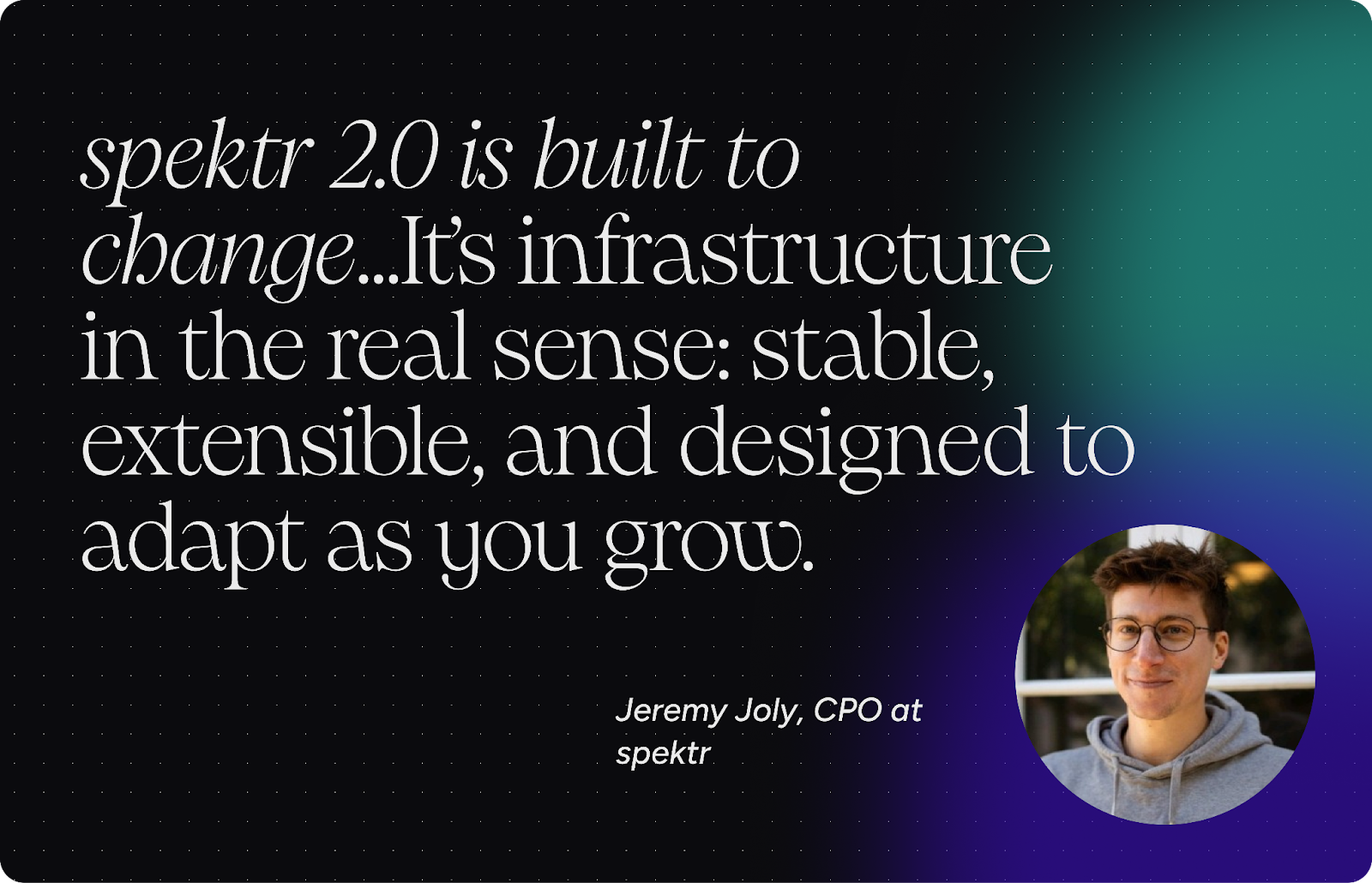
Where we’re going
spektr 2.0 isn’t a pivot. It’s the next step in a journey we’ve been on since day one: giving compliance teams superpowers. We believe regulated products shouldn’t be held back by rigid workflows or generic tools. They deserve infrastructure that matches the speed and complexity of the businesses they power.
With spektr 2.0, we’re offering a platform that does just that – not just for onboarding, but for any process that touches customer risk. Already, early adopters are using the new platform to automate merchant onboarding, build internal review flows, and create adaptive policies that shift based on real-time data. And the best part? They’re doing it with less code, less overhead, and more confidence.
If you’re building in a regulated space and want to see what modern compliance infrastructure looks like; we’d love to show you.
Start a trial or reach out directly to the team!




